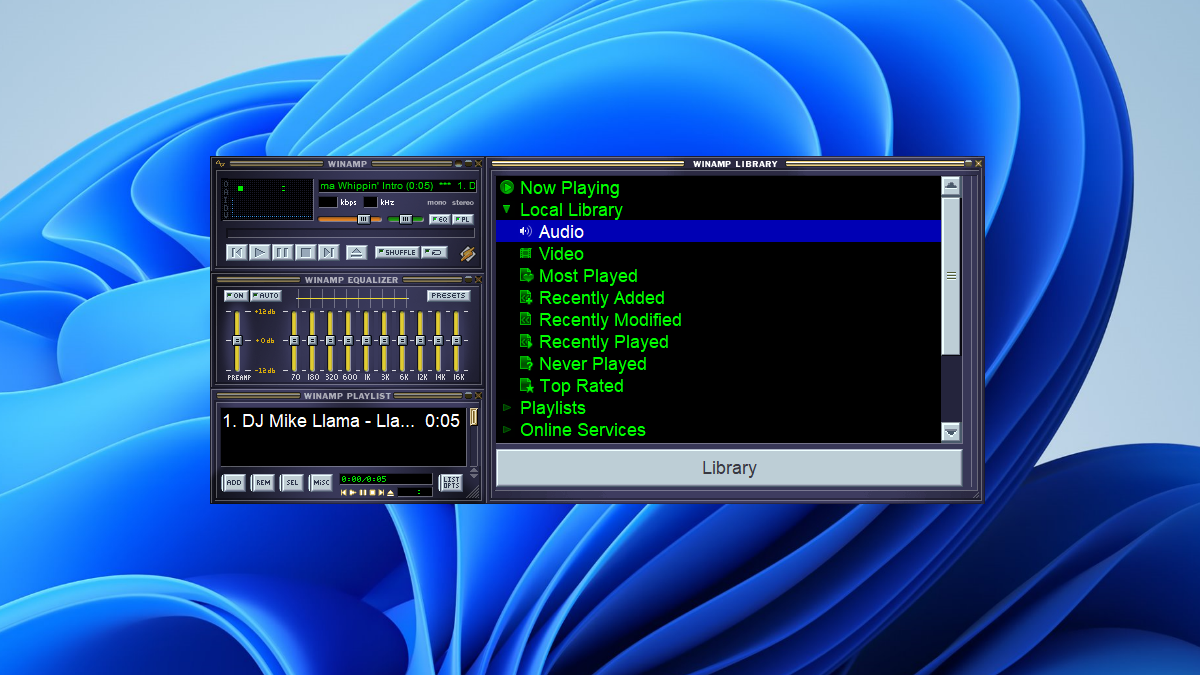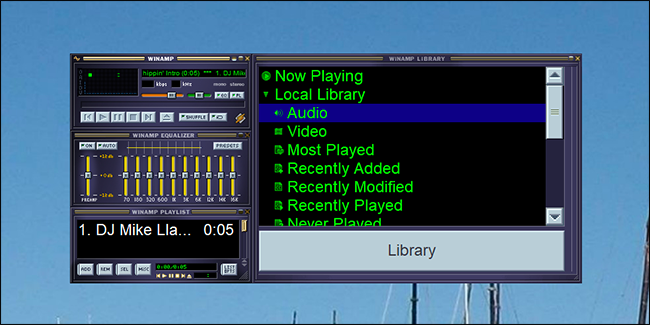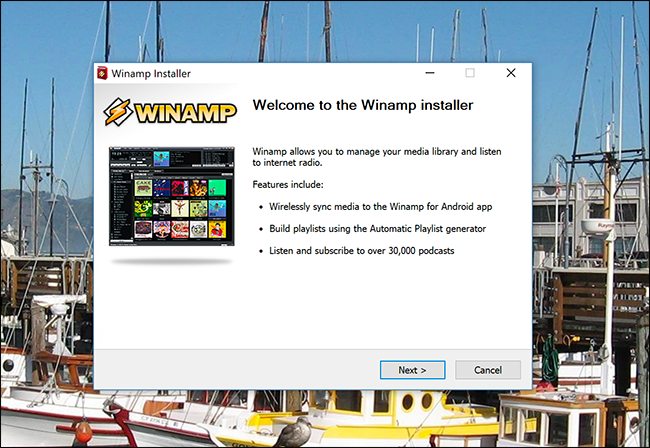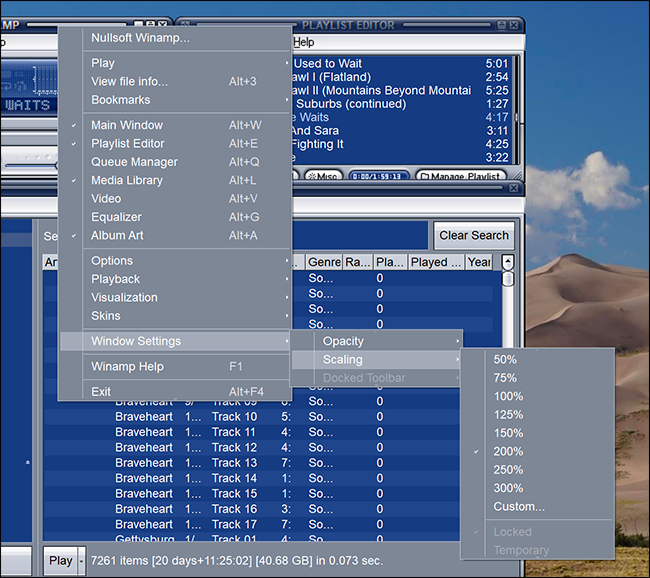Twenty-five years ago Winamp was the future. Now it's a distant memory. What happened?
Winamp (Windows Advanced Multimedia Products) came out on April 21, 1997---back when listening to music on computers was a novel concept, and most people didn't know what "MP3" meant. Winamp wasn't the first PC music player, but it did make it easy to create a playlist: drag files over to the playlist window and start listening. This, combined with early file-sharing networks like Napster, changed the way people discovered and listened to music. Winamp rode that wave, growing until it had 90 million users, only to become irrelevant.
Editor's Note: We originally published this piece in 2018. We're republishing it in honor of Winamp's twenty-fifth anniversary on April 21, 2022. The first version of Winamp (version 0.20a) was released on April 21, 1997.
Hardly anyone uses Winamp these days. Where did it go? And could you use it today, if you wanted to? Let's dig in and see what we can find.
What Happened to Winamp?
Winamp was lightweight, customizable, and made listening to music easier than any player that came before it. It quickly became a hit, despite only having a four-person team behind it. Part of the appeal came from the community: a plugin and skin ecosystem allowed designers and developers to customize things in surprising ways, and music nerds loved having that kind of control.
Our story's ending begins with a buyout, like many other 90s tech stories. In June of 1999, AOL acquired Nullsoft (the company behind Winamp) for $80 million. That's quite the payout for a four-person team, but AOL never really knew what to do with what they bought. Page views to the Winamp website brought in a big chunk of ad revenue, sure, and thousands of people paid $10 for the Pro version of the software, but that was about it regarding revenue.
AOL, meanwhile, was still making ridiculous sums of money with its infamously sandboxed dial-up service. That massive revenue stream made it hard to prioritize other projects---even those for which AOL paid millions. Eventually, AOL decided software like Winamp was a promotional opportunity for the dial-up service, and soon installing Winamp meant declining offers for "free" AOL subscriptions.
This was a major turnoff for Winamp users. Here's Cyrus Farivar, writing for Ars Technica in a very good feature about Winamp's decline:
[Winamp's] primary users were music fans, geeks, and people who cared about what bitrate their MP3s were encoded at---in other words, the key users of Winamp in the early 2000s were allergic to AOL as a company.
Bundling AOL software and offers with Winamp cheapened the software in users' eyes. Then something new came along.
In 2001 Apple launched the iPod, and it caught on in a big way. By 2003 iTunes came out for the PC and that was the beginning of the end for Winamp. Everyone who bought an iPod switched to iTunes for listening to music, because iTunes was more-or-less required for loading up an iPod with music---and a lot of people bought iPods.
Even if you didn't own an iPod, iTunes was attractive. It could identify and rip your CDs in just a couple of clicks. The search was basically instant. And while Winamp's interface was a bit cluttered, the iTunes interface (at least at the time) was clean and easy to use. Winamp was made up of several windows; iTunes only had one. Winamp offered thousands of fan-created themes and plugins; iTunes wasn't really customizable at all.
A lot of geeks preferred Winamp, but iTunes appealed to a much bigger audience who just wanted to rip a bunch of CDs and listen to them. Winamp tried to fight this by offering unofficial support for transferring music to an iPod, but it wasn't enough. Apple took the music player market and ran with it (and then spent 15 years turning iTunes into the cluttered mess we all hate today.)
Winamp's userbase declined, and by 2013 AOL decided to shut it down entirely. That plan changed at the last second when Nullsoft was sold to Radionomy. Since then the Winamp website has declared a new version is "coming soon," but five years later and we've seen nothing. There are occasional developer rumblings about new builds, but nothing substantial so far.
Can You Use It Today?
So you might be wondering: can you install and use Winamp right now? The answer: sort of. The WinAMP website, unchanged for five years, points to a forum thread when you request a download. This thread points to a simplistic website where you'll find Winamp 5.666 for Windows. This software dates back to 2013, but it works.
I installed Winamp on a modern Windows 10 machine and quickly noticed a problem: nothing here is scaled properly on high-resolution displays. You can solve this in any modern skin by adjusting the Scaling settings, like this:
If you're using a classic skin, you can use the keyboard shortcut Ctrl+D to double the size of the main window.
Winamp once offered a vast directory of skins and plugins, but that died in 2013. Happily, Winamp heritage offers a large collection, so check that out if you want to try out anything you remember from back in the day.
I don't think Winamp has aged well. But it does work, and if nothing else is worth firing up for the nostalgia factor. Sure, it's a little buggy, and the UI looks pixelated on modern displays after you adjust the scaling. But it's Winamp, and that's worth something. Give it a spin and remember the early 2000s. Who knows? Maybe you'll even use it full-time.
Photo credit: Al Pavangkanan





